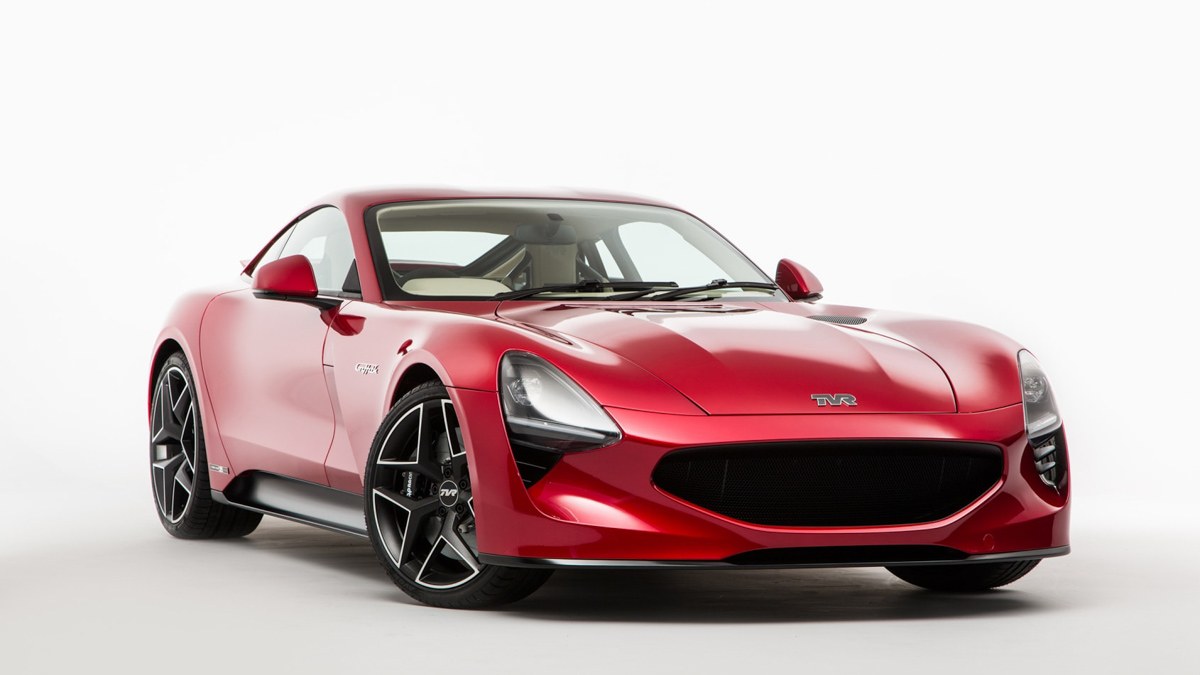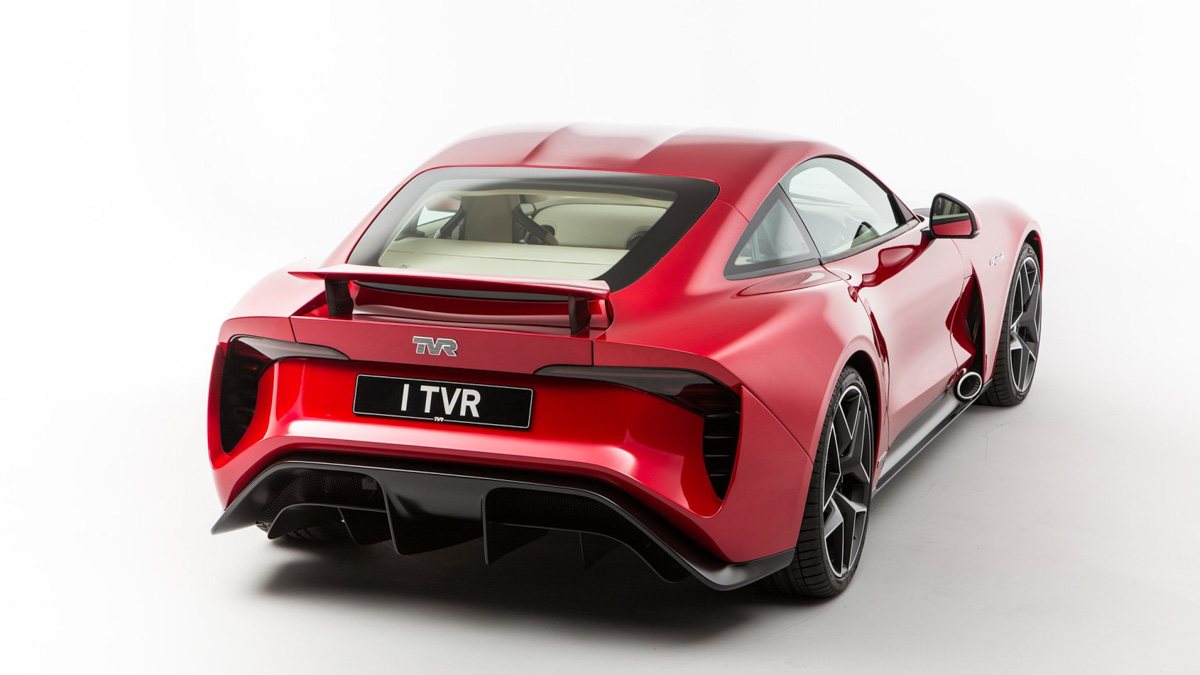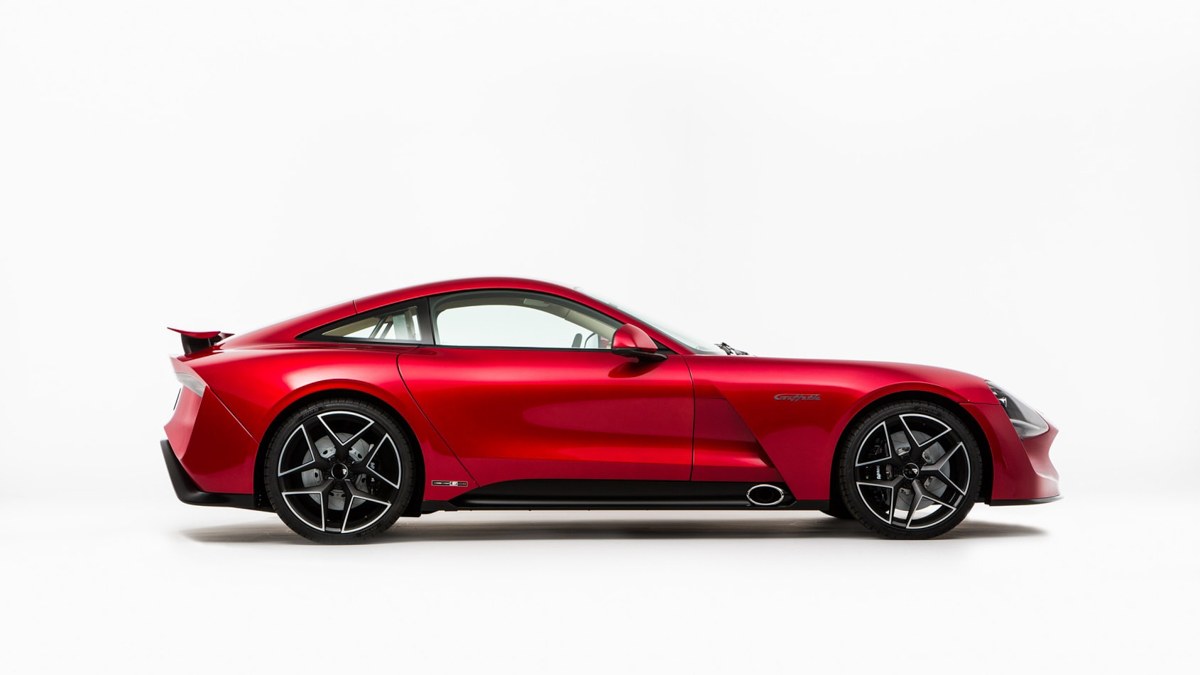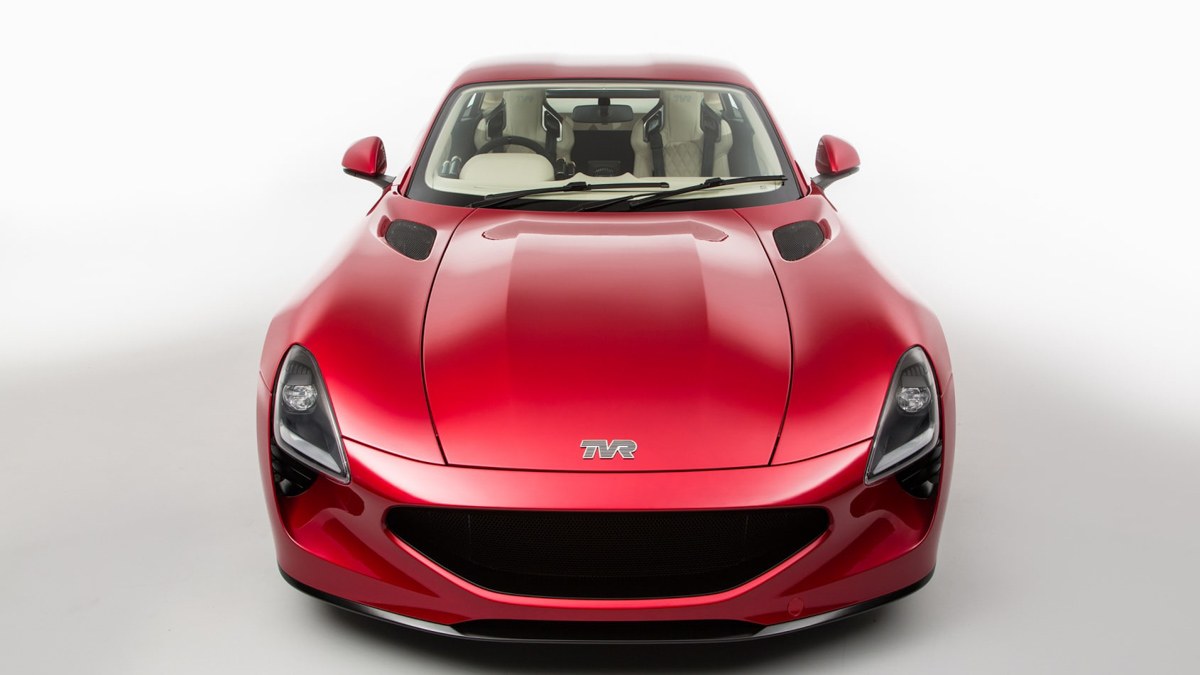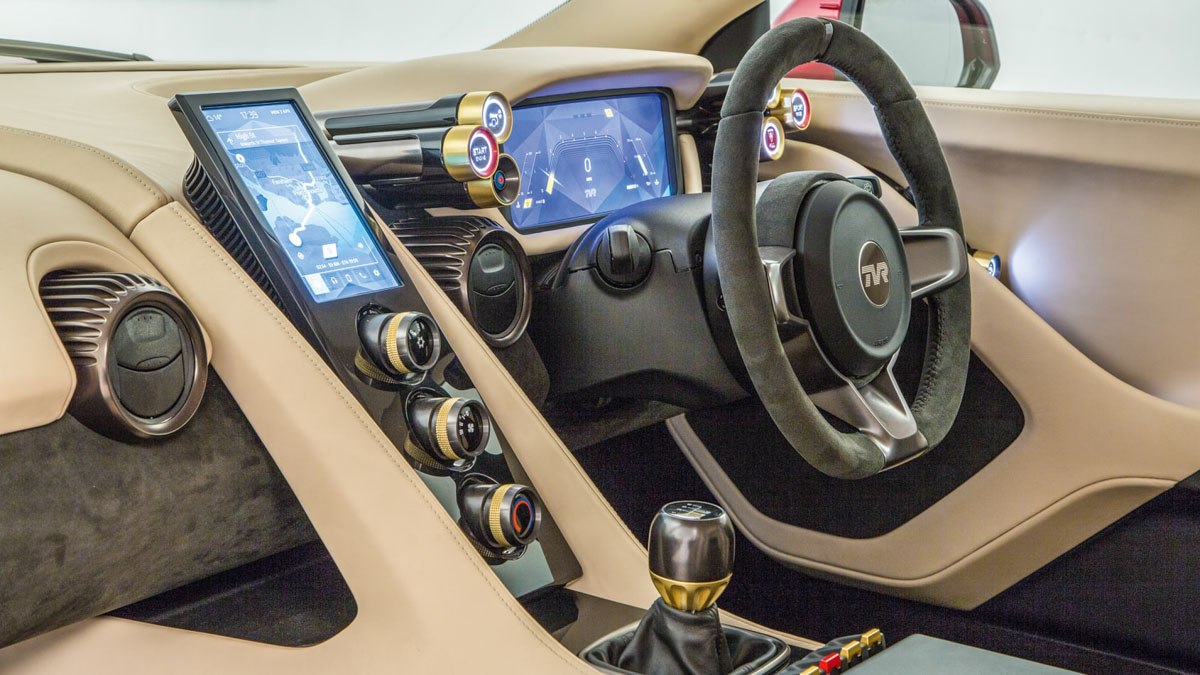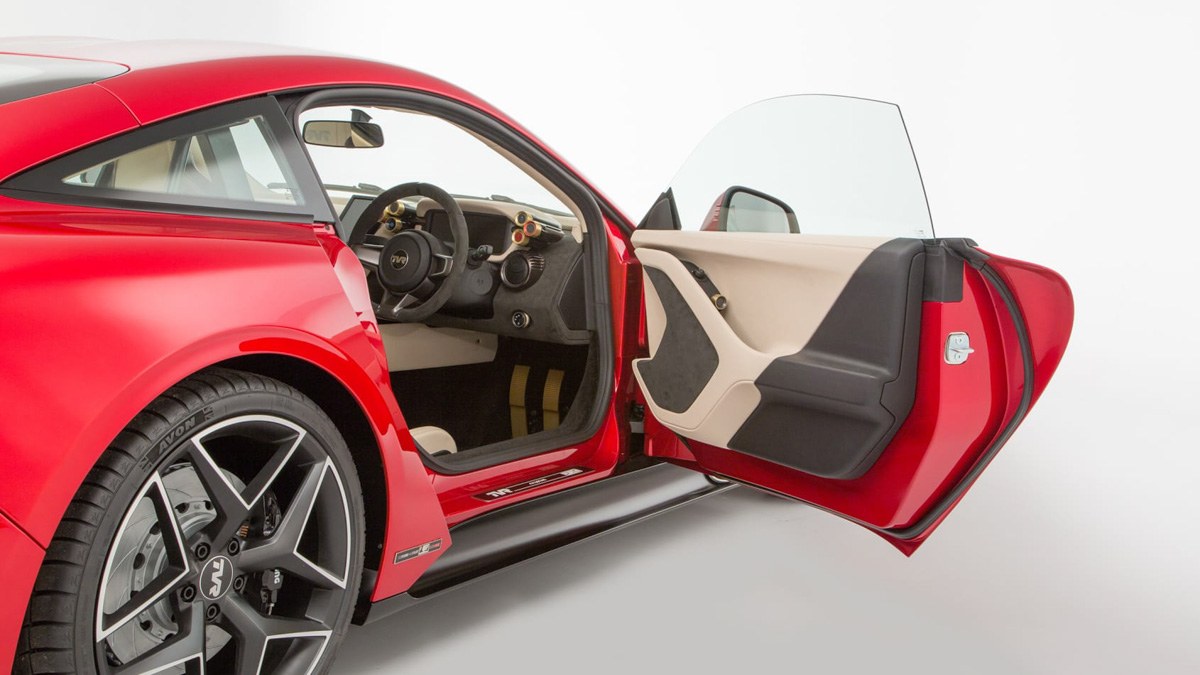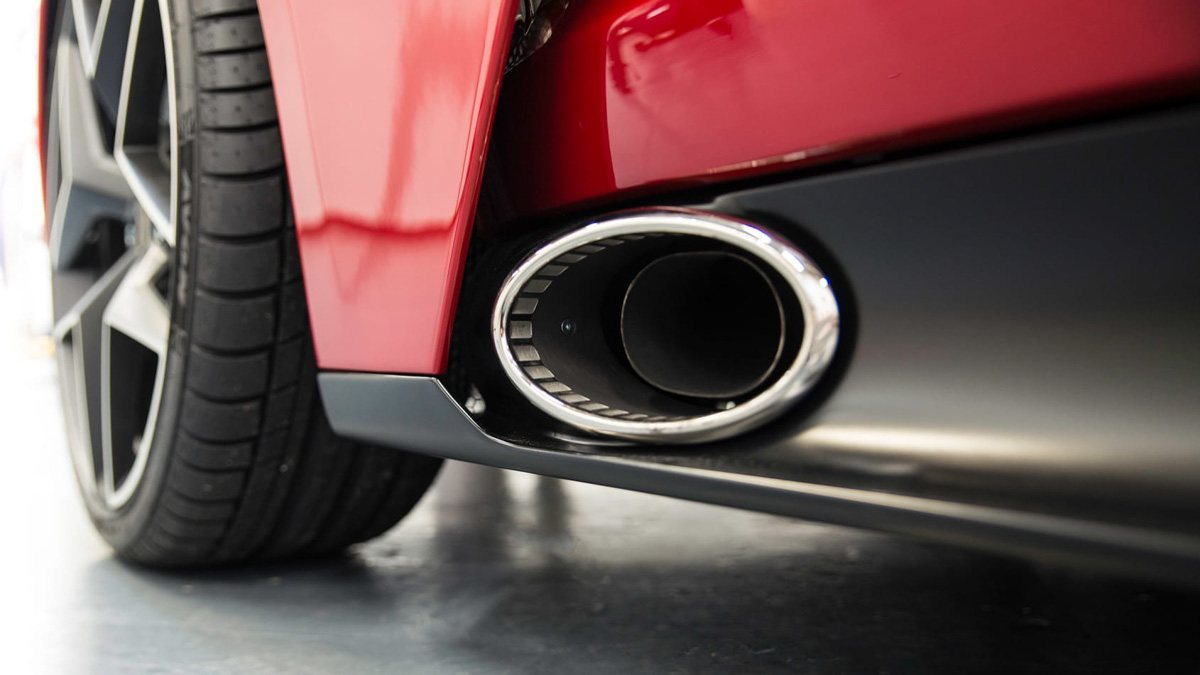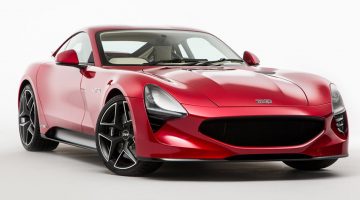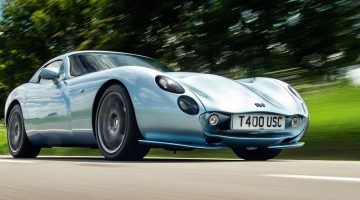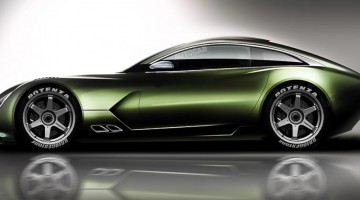TVR’s troubled rebirth has gained yet another lifeline, but don’t expect to see a new Griffith on the road any time soon
Ten months after TVR announced a $2.7m funding boost to help bring its Griffith to market, the marque has announced a new partnership with Ensorcia Metals Corporation. Though it hasn’t disclosed how close this new backing brings it to its $35m funding target, it’s said to help fund both production and development of the long-awaited Griffith and a future EV.
Details are vague, but the new partnership with Ensorcia Metals Company is said to have sparked work on future powertrain alternatives, even though the V8-powered Griffith has yet to get even close to production. Les Edgar, Chairman of TVR, said: ‘…it has been clear for some time that EV has to be part of our future. Finding the right partner for the road ahead has been a complex process.’ Affiliate company Ensorcia Automotive is also said to have injected funding into the development of the combustion-powered Griffith.
> Aston Martin Valkyrie production begins
The first Griffiths were due for delivery in early 2019, and all looked healthy with a $54m order bank and secured funding from both financial partners and the Welsh government, but now TVR has pushed first deliveries to late 2023, six years from its 2017 debut.
A manufacturing facility was acquired by TVR in mid-2018, but reports stated that the marque’s Welsh factory had more structural damage than initially anticipated. Holding a three per cent stake in the British car brand, the Welsh government is playing a large role in funding the renovations, but with no investment seen on the planned $135m Automotive Technology park in nearby Rhyd-y-Blew, concerns are that delays may cause funding to be cut entirely.
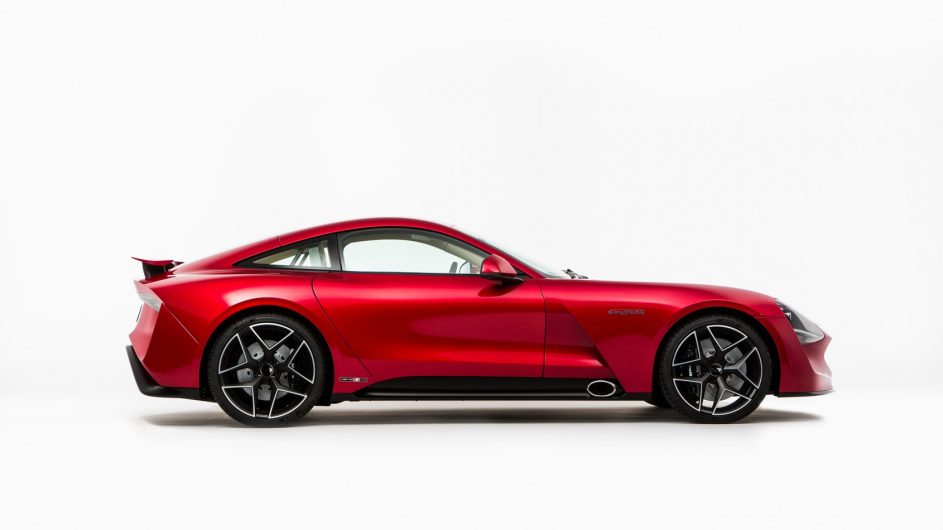
Despite frequent appearances at motor shows since its 2017 announcement, the new Griffith is still far away from entering production, as it’s still in need of extensive development and prototyping, both of which have stalled completely. While these cash injections will no doubt help, it remains a drop in the ocean when it comes to the cost of development, despite its streamlined production processes partnered with Gordon Murray Design.
The new Griffith was due to be the the first new model from TVR since the Sagaris released in 2004, and the first since the company was bought by entrepreneur Edgar in 2013. Featuring a front-mounted V8 engine and drive to the rear, the Griffith has models such as the Porsche 911, Aston Martin Vantage and Jaguar F-type firmly in its sights. It was also to spearhead the firm’s return to motorsport as it targets a class victory in the Le Mans 24 Hours.
On the surface the Griffith looks like a traditional TVR, but beneath is a blend of cutting-edge tech and old-school engineering. The engine will provide the low-tech charm; the Griffith will be powered by an off-the-shelf 5-litre V8 from Ford. The tried and tested unit isn’t the most advanced engine, but it’s unbustable and should go a long way to shake off TVR’s slightly flaky reputation for reliability.
Better still, tweaks by British engineering specialist Cosworth are claimed to deliver even greater performance. The V8 feeds some side-exit exhausts that pop out from behind the front wheels (a design detail that wouldn’t look out of place on the original 1960s Griffith) and the smallest of rear wings keeps the silhouette as clean as possible.

As well as Gordon Murray Automotive’s iStream construction process, the high-tech elements of the Griffith will be made up of some fairly sophisticated aerodynamics. For instance, the side-exit exhausts have allowed TVR to create an almost totally flat underside, which means the Griffith is effectively a ‘ground effects’ car. The only notable external addition is the rear spoiler which has been added to boost traction at high speeds, crucial for when the motorsport version of the Griffith takes to the track.
Of course the reality of this actually coming to fruition continues to look pretty bleak for TVR, even with its new lifeline. Whether this flutter of life is nothing more than a blip on an empty radar, or the beginning of a new push to see the company come back to life, we’ll have to wait and see.
TVR claims the new Griffith has exceptional torsional rigidity and should tip the scales at under 1250kg. In terms of proportions, the new Griffith measures 4314mm in length, is 1850mm wide and 1239mm high, and putting that into context, Porsche’s current 718 Cayman measures 4379mm, 1801mm and 1205mm respectively.
Beneath the David Seesing-designed carbonfibre body, and hung from the iStream chassis with its 50:50 weight distribution, are double wishbones front and rear, with adjustable coilover dampers and concentric springs. The steering is electric power assisted, while the brakes are 370mm ventilated and floating discs with six-piston calipers at the front and 350mm two-piece discs at the rear with four-piston calipers. The 19-inch front wheels are fitted with a 235/35 Avon ZZ5 tyre, the 20-inch rears with a 275/30.
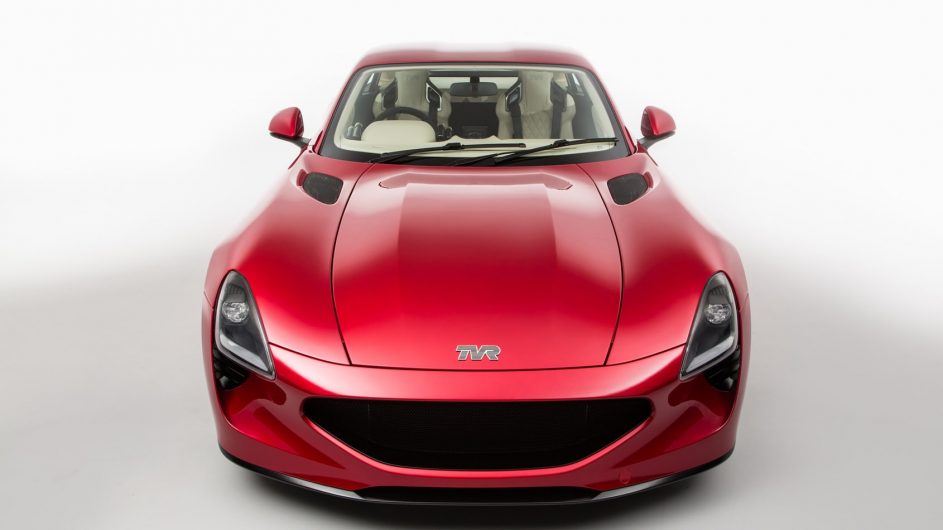
Although power and torque figures are yet to be quoted, TVR’s official video created in conjunction with Goodwood states the engine produces 480bhp. The press literature does state that the car will have a power-to-weight ratio of 400bhp per ton, but 480bhp and a kerb weight of 1250kg results in 390bhp per ton, short of the claimed figure. We’re told the six-speed manual Tremec gearbox is rated to 700lb ft at up to 7500rpm.
Performance is something else TVR is being coy about, but it claims a maximum speed of over 322kph and a sub four-second 0-100kph time. The car will be offered with a variety of driving modes, too.
If you’re a fan of TVRs of old you’ll be expecting an unconventional interior, and while the new Griffith isn’t on a par with its ancestors for the quirkiness and plain daft design details of old, it’s not an Audi inside, either. There’s a TFT instrument binnacle, rotary controls for the air conditioning and even a keyless ignition system. The floor-mounted aluminium pedals look suitably proper, too.
AA strict two-seater, the Griffith was proposed to be priced from £90,000, with buyers given the choice of a range of colours including specific Launch Edition hues, alongside a full leather interior. Five hundred Griffith Launch Editions are set to be produced, and although all were once accounted for, a ‘small number’ are now available.
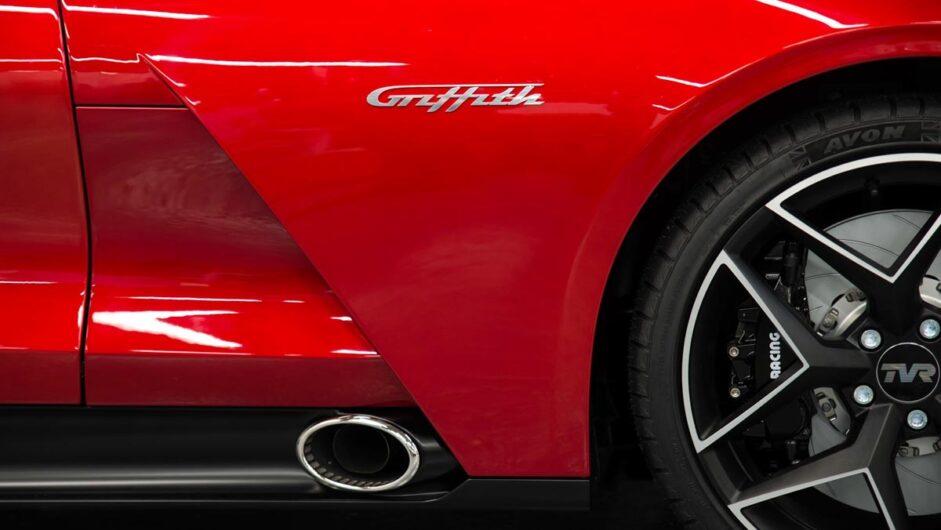
Les Edgar Interview
In an interview with TVR’s Les Edgar, the man charged with reviving the British sports car manufacturer, he tells us how the new Griffith will capture the best of old TVR while avoiding past mistakes.
Where did TVR’s rebirth all begin?
‘In 2013, a dozen of us – all petrolheads, all successful in business, many of us competition licence holders – were playing with the idea of starting a car company to go racing. We’d looked at various marques that we might acquire to create something between Lotus and Aston Martin, and TVR fitted the bill, but was seemingly beyond our grasp. Then a contact said: “I might be able to put you in touch.”
‘So I found myself talking to Nikolai Smolenski. He told me a couple of stories, one of which was that the car we wanted to make would cost $200k. He’d done a massive amount of research, but possibly not seen Gordon Murray Design and iStream. The other story was that he’d been walking through Berkeley Square in London when a small kid came running up to him, kicked him in the shins and said: “You killed TVR!”
‘So the tack I took with him was to say: “I will help you redeem yourself. Sell it to me and we’ll publicly say that you helped with the repatriation of TVR.” I think it struck a chord because a couple of days later he rang me up and we bought it for a not-unreasonable sum. The deal was done very quickly, in May 2013.’
What did the deal get you?
‘More than we thought. Initially we thought we were buying the name, the brand, all the trademarks and maybe some of the drawings. Then a large Transit van turned up and it was stuffed with paperwork and hard drives. It seemed that all the desks had been emptied. So we have surprisingly good build records, especially for the latter years. We also got the keys to a warehouse in Northants that was full of spares, so we immediately set up TVR Parts Ltd, and we have re-established TVR service centres, about 30 in the UK, 12 others worldwide.’
What happened next?
‘Getting started took about a year figuring out what to keep in terms of DNA. Getting Gordon Murray on board wasn’t simple, with a lot of due diligence to be done on his side. Cosworth, too, we needed for credibility. The iStream concept came as a bonus – we weren’t aware of that. We wanted the car to be an uncomplicated driver’s car, so a well-designed, well-balanced car with aero, and obviously if anyone knows about aerodynamics, it’s Gordon.’
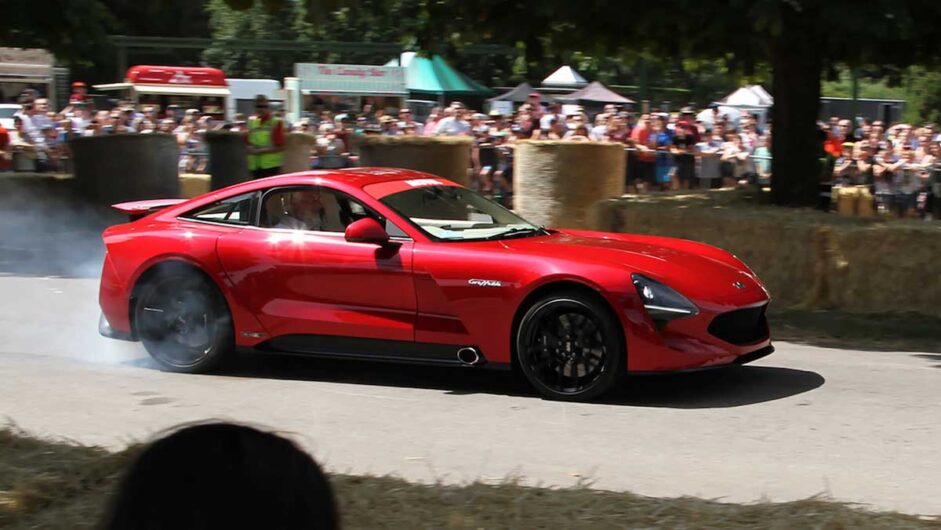
How did you get Gordon Murray on board?
‘I said to him and his senior team: “I don’t know what you’re doing for the next few years, but I’m going to Le Mans.” That kind of clinched it. Gordon has brought with him from McLaren most of the team that he had for the F1 GT racing project for Le Mans. And it is our intent; you’re not a credible sports car maker unless you can prove you’re up there with the best of them, and that’s not F1, it’s GT racing. World Endurance is where a car that has had questionable reliability in the past should be. You just have to be careful it doesn’t suck away time and money from the core business.’
What is iStream?
‘It’s a concept and a process, F1 technology in a road car. If you’ve seen the chassis images you might unfortunately think that the new car is just like old TVRs, with a tubular steel chassis, but it’s not. The skeleton is purely there to locate the heavy bits – the engine, suspension, me! – which is difficult to do with a fully carbon car. As it is, the skeleton is as torsionally stiff as the Cerbera spaceframe. But then we bond in the carbon sandwich panels and the stiffness goes up to seven times that. We think it’s best in class.’
What do you consider to be the Griffith’s rivals?
‘There’s a number of ways of looking at that. On price, we compete with the base 911 and Cayman GT4, the Aston Martin Vantage and the V8 Jaguar F-type. On performance we should be up with or above all of them. And then there’s emotion. Why would you buy the Griffith rather than a 911? Because it’s British. Because it’s not a Porsche. Because it’s bespoke, hand-built, but in the right way – it will be reliable! And also because it’s rare, a bit outrageous, noisy, rebellious. TVR can do things that others can’t. Where they’re defined, TVR can be anything.’
Will it be everyday useable, then?
‘It has to be. I see it as being between a Lotus and an Aston, a proper GT with a 400-mile range, full leather, air conditioned. The sill is narrow so it’s easy for a lady to get in, or a 6ft 5in man. We have looked at the geometry of the driving position and the sight lines for everyone from 5th to 95th percentile – which happens to be my wife, who is 5ft 4in, and me. I’m not sure that ever happened before at TVR.’
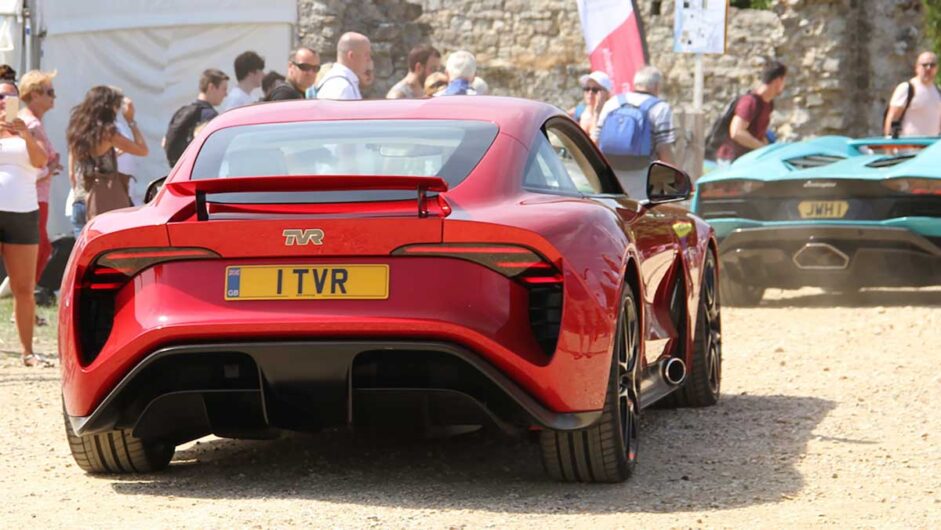
How was the car styled?
‘The first thing we did was get the iStream chassis structure locked down. That was within six months of signing with Gordon. He said: “Don’t touch that and you’ll have a great-handling car.” Frank Coppuck [TVR technical director] spent a long time persuading him to make it 50mm wider so we could get the maximum rear wing width for racing – it’s based on the width of the standard car. Then we let the designer loose on the car, and then we got the aero sorted. It has side-exit exhausts because we wanted a flat underfloor. All the holes do something, aerodynamically.’
It’s surprising that it has a rear spoiler, then?
‘Yes. It’s a ground effects car but we needed the spoiler for traction – it’s more about downforce, about getting weight on the back of the car. The critical factors are bhp per ton and the absolute weight of the car. A key target is 400bhp per ton. That defines the performance. The other important stat for me is how fast it gets to 160kph and back again, and a lightweight car does very well in that, as long as you’ve got the traction. The biggest technical issues are traction and heat management. Avon are making us a bespoke tyre.’
Do you have anyone on board to do the dynamic set-up?
‘We do. But I can’t say who it is!’
What level of legislation will the car comply with?
‘European Small Series, which will allow us to make 1000 coupes and 1000 convertibles a year. There will be left- and right-hand-drive models from day one. The 500 Launch Editions are sold out. In fact, we have 700 orders, and between ten and 15 per cent of those are for left-hand drive.’
How did the engine deal come about?
‘You can genuinely say you are a car maker when you make your own engine, but we had to get away from ‘chocolate’ engines. The sorted Speed Six engine was great but it took ten years to get it right. We couldn’t afford to risk that again. Ford has supplied engines for 50 per cent of all TVRs and at the time [2014] was just introducing the new Mustang. It makes about three quarters of a million ‘Coyote’ V8s a year, so it’s a proven engine. They were happy to supply, we just had to make it special. Enter Cosworth, who tick all the right boxes for me. It was important that we didn’t break open the engine, so we put on a lightweight flywheel, dry sump – allowing it to be 100mm lower in the car – and a new air intake, which helps enormously, and a new ECU. We’ve had a Mustang with the Cosworth drivetrain racking up the miles and we now have a Cerbera with it, which is outrageous. And the show car gets shaken down next week and becomes our first, fully representative prototype.’
This article originally appeared at evo.co.uk
Copyright © evo UK, Dennis Publishing

